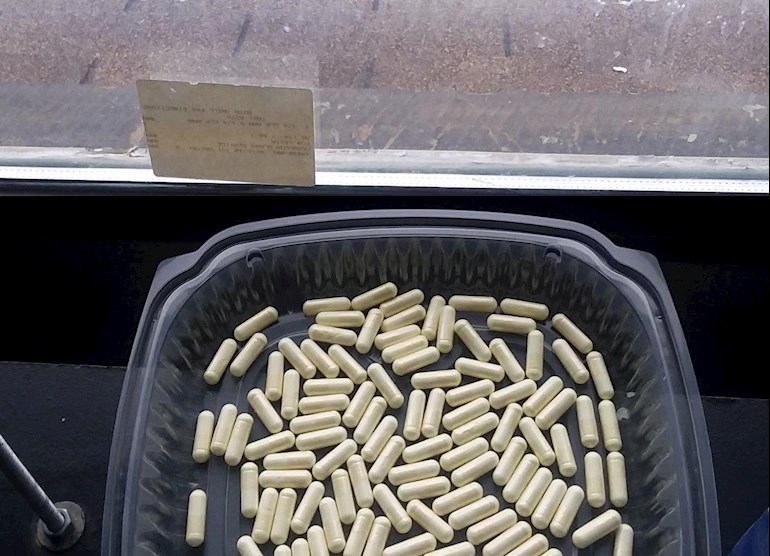Quite a while ago I looked into the HU posting,
Can Garlic Treat Parkinson’s Disease?
healthunlocked.com/parkinso...
137378476/can-garlic-treat-parkinson%E2%80%99s-disease
After reading the imbedded article,
realnatural.org/can-garlic-...
The authors noted 2 specific targets for possible improvement of PD symptoms by eating aged garlic: raising low thiol levels (and consequently low glutathione levels). Secondly, raising hydrogen sulfide (H2S) levels. I wrote the following in a way so the narrative can understood on the first reading.
Alpha lipoic acid has a number of different names including thioctic acid
From Wikipedia:
"Lipoic acid....α-lipoic acid...alpha lipoic acid...thioctic acid is an organosulfur
compound derived from octanoic acid. LA contains two sulfur atoms (at C6 and C8)
connected by a disulfide bond and is thus considered to be oxidized although either
sulfur atom can exist in higher oxidation states."
en.wikipedia.org/wiki/Lipoi...
"Diallyl disulfide....is an organosulfur compound derived from garlic and a few
other genus Allium plants."
"It is produced during the decomposition of allicin, which is released upon
crushing garlic and other plants of the Alliaceae family."
en.wikipedia.org/wiki/Diall...
"The present in vivo studies demonstrated that diallyl disulfide..., occurring
in garlic, elevated hepatic sulfane sulfur level...in healthy mice..."
sciencedirect.com/science/a...
Lipoic Acid as a Possible Pharmacological Source of Hydrogen Sulfide/Sulfane Sulfur
"The aim of the present study was to verify whether lipoic acid (LA) itself is
a source of H2S and sulfane sulfur."
"The study performed in the presence of rat liver and kidney homogenate
revealed an increase of H2S level in samples containing LA and its reduced
form dihydrolipoic acid (DHLA). It was accompanied by a decrease in sulfane
sulfur level. It seems that, in these conditions, DHLA acts as a reducing
agent that releases H2S from an endogenous pool of sulfane sulfur compounds
present in tissues."
mdpi.com/1420-3049/22/3/388...
My Summary: Allicin decomposes and forms diallyl disulfide which raises liver
sulfane levels. In the presence of the reduced form of alpha lipoic acid,
dihydrolipoic acid, H2S is produced from the reduction of sulfane by
dihydrolipoic acid.
What is allicin?
"Researchers have widely believed that the organic compound, allicin – which
gives garlic its aroma and flavour – acts as the world's most powerful antioxidant."
"Basically the allicin compound has to decompose in order to generate a potent
antioxidant," ..... "The reaction between the sulfenic acid and radicals is as
fast as it can get, limited only by the time it takes for the two molecules to
come into contact. No one has ever seen compounds, natural or synthetic, react
this quickly as antioxidants."
sciencedaily.com/releases/2...
Is allicin neuroprotective in PD models?
Allicin Protects PC12 Cells Against 6-OHDA-Induced Oxidative Stress and
Mitochondrial Dysfunction via Regulating Mitochondrial Dynamics
researchgate.net/publicatio...
PC12_Cells_Against_6-OHDA-Induced_Oxidative_Stress_and_Mitochondrial_
Dysfunction_via_Regulating_Mitochondrial_Dynamics
Is alpha lipoic acid neuroprotective in PD models?
Combined R‐α–lipoic acid and acetyl‐L‐carnitine exerts efficient preventative effects in a cellular model of Parkinson’s disease
onlinelibrary.wiley.com/doi...
-------------------------
WARNING: Allicin is a blood thinner and cannot be taken with other blood thinners
like warfarin or fish oil. In the absence of taking an allicin supplement, hydrogen sulfide/H2S can be produced non-enzymatically through the exposure of alpha lipoic acid/LA to direct sunlight.
Lipoic Acid as a Possible Pharmacological Source of Hydrogen Sulfide/Sulfane Sulfur
"The present results indicate that not only H2S but also sulfane sulfur
is formed from LA non-enzymatically under in vitro conditions in the presence
of visible light."
"....when LA samples were left for three days at room temperature and
unprotected from light, the amount of H2S strongly increased. These results
suggest that, in the presence of light, LA can be decomposed non-enzymatically
with H2S release."
"Interestingly, the results of this experiment demonstrated that H2S liberated
from seven-days LA left exposed to environmental light was nearly twice the
amount lower than three-days LA samples at both pH values."
mdpi.com/1420-3049/22/3/388...
WARNING: It has to be noted that hydrogen sulfide/H2S is poisonous at high levels so in my experiment I exposed R-alpha lipoic acid to light until I smelled rotten eggs -
the second day. So days 3-7 did not happen.. Without knowing the parts per million of Hs2 produced it is best to play it safe.
-------------
The supplementation of allicin in combination with R-alpha lipoic acid may help to
produce hydrogen sulfide levels in the body. And exposure of R-alpha lipoic acid to
sunlight produces both H2S and sulfane sulfur.
------
PTP1B
Alzheimer's/Parkinson's: Unexpected signaling role for foul-smelling hydrogen sulfide in cell response to protein misfolding
"Hydrogen sulfide is produced 'as part of the cell's response to endoplasmic reticulum
(ER) stress."
My article synopsis:
In ER stress, H2S is released and induces modification to an enzyme called PTP1B, (protein tyrosine phosphatase), thus preventing the inactivation of an enzyme called PERK, "which is a sensor of the presense of unfolded proteins and a critical regulator of the cell's response to ER stress."
sciencedaily.com/releases/2...
Theabrownin May Be the Main Bioactive Molecule in Pu-erh Tea
"This rust-brown colored pigment is also found in black tea but at lower concentrations (4% to 9% in black tea as compared to 10% to 14% in pu-erh tea)."
life-enhancement.com/magazi...
Application of theabrownin in pharmacy
4. theabrownin their formulations in the manufacture of proteins by tyrosine phosphatase inhibiting drug.
"Tea is a natural plant, drug side effects, theabrownin is one of the main active ingredient in tea, but tea has not yet found a clear structure theabrownin reported inhibition of PTP1B."
